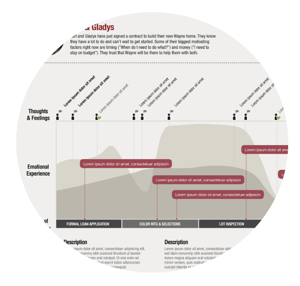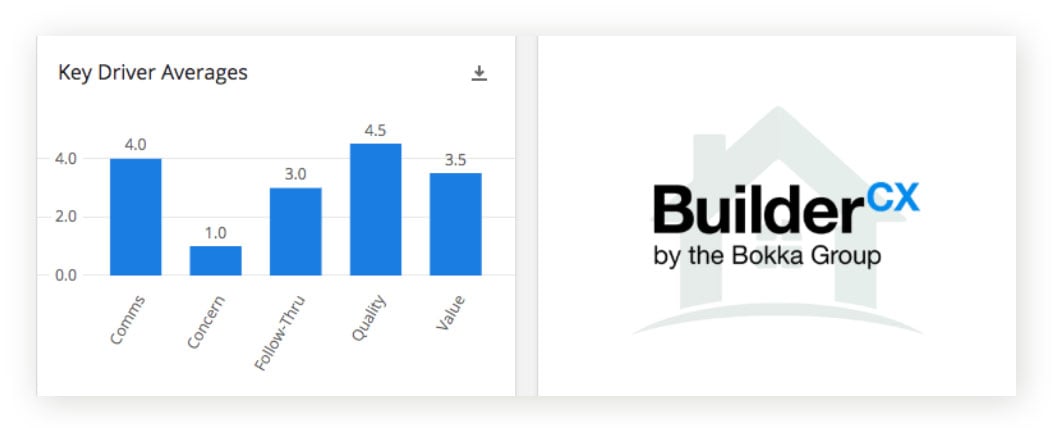
If I asked you to name a home buyer that was a complete thorn in the side of your company, I bet you'd waste no time coming up with an answer (if not several). It's never a good sign when everyone in the company knows "Difficult Dan" on a first-name basis. Front-line employees know him best, but Dan's reputation precedes him every step of the way. From the sales office to design studio, all the way through warranty. His issues have been escalated to managers repeatedly. Even the CEO recognizes him from the nasty emails threatening litigation. Sound familiar?
What causes someone to become a difficult home buyer in the first place?
It's easy to label the Dan as a problem customer. Someone that can never be pleased. "He's just out to get a free lunch." But how many of us are willing to look squarely in the mirror and ask, "Did we play a role in this?"
 The warning signs usually surface early in the process. Maybe the customer hears conflicting messages from a salesperson and gets confused. He keeps asking "Why can't I get that? It's in the model." Features and options weren't fully explained. He felt pressured to sign the contract. The list goes on and on. The customer's planning phase may have generated the necessary paperwork to get their home started, but the experience fell short of what the customer expected and what the builder promised.
The warning signs usually surface early in the process. Maybe the customer hears conflicting messages from a salesperson and gets confused. He keeps asking "Why can't I get that? It's in the model." Features and options weren't fully explained. He felt pressured to sign the contract. The list goes on and on. The customer's planning phase may have generated the necessary paperwork to get their home started, but the experience fell short of what the customer expected and what the builder promised.
As a result, he stumbles into production questioning his decisions. Instead of sitting back as a confident observer ready to watch his family's dream home be built, he re-visits the sales office and design studio. He walks specs and other homes under construction. He talks to neighbors in the community. In the process, he sees features he wants for his own home and submits change order after change order to get it built how he would actually like it. Then he's upset to learn about the additional fees to secure options never shown during previous appointments. Or worse, it's too late in the process to make changes and he's forced to live with his original decisions.
Is it any surprise that a customer in that scenario might begin to make waves and take an adversarial role? Did they really start that way or do we need to take some ownership in the monster we've helped create?
The first step in dealing with a difficult home buyer: identify the personality type.
More often than not, personality conflicts play a major role in contentious customer relationships. A buyer that's an engineer by trade would prefer to work with someone that reviews every detail with laser precision. The customer from a big family may expect a more "touchy-feely" emotional connection with their builder throughout their journey. Developing a successful relationship almost always hinges on connecting at a personal level. But not all personalities get along. Given the lengthy cycle time from contract to close plus the warranty period, builders are uniquely challenged to maintain their relationships over an extended period of time, with what is arguably the most personal purchase the customer will ever make. Creating a relationship-building strategy that works for all personality types is a must.
Consider the power of the personality match when dealing with difficult customers.
One of the wonderful things about working in a home building company is the the wide range of personality types attracted to the business. Between salespeople, designers and field staff, you have a high likelihood of being able to match-up the personality of someone on your team with just about every kind of customer. So if a challenging customer has been identified, come together to discuss how the team is going to move forward and who will be running point as soon as possible.
 You may be asking yourself, "do I really want to rewrite my entire customer experience strategy for the very small percentage of customers that are impossible to please?" Probably not. But when you consider the disruptive nature of problem customers on your organization (camping out in your sales offices, escalating issues to managers, putting signs up in the yard, blasting you on social media, etc.), identifying a personality match to turn the situation around is not going to take any more time and is really the only course of action that works. There's no guarantee it will totally salvage the relationship, but even the most disgruntled customer will recognize your effort and give you credit for trying.
You may be asking yourself, "do I really want to rewrite my entire customer experience strategy for the very small percentage of customers that are impossible to please?" Probably not. But when you consider the disruptive nature of problem customers on your organization (camping out in your sales offices, escalating issues to managers, putting signs up in the yard, blasting you on social media, etc.), identifying a personality match to turn the situation around is not going to take any more time and is really the only course of action that works. There's no guarantee it will totally salvage the relationship, but even the most disgruntled customer will recognize your effort and give you credit for trying.
Set the right expectations, and deliver on them for every single customer.
It is extremely easy to write-off difficult customers. After all, some people are just impossible to please. But if over the course of the year your sales team quits on 2% of its customers, and the design team quits on 2% of its customers, and the construction team quits on 2%, and the warranty team follows suit, the cumulative effect is devastating.
Allowing your team to begin to categorize any customer that gives negative feedback as "unreasonable" is a dangerous mentality that quickly leads to organizational mediocrity. If you have promised a fantastic product and experience on your website and in your sales office, you need to commit to delivering on that promise with every customer, not just the ones you get along with. Your brand is more than just a promise. It's how well you keep your promises.
A well-defined customer journey is a powerful tool.
Your difficult customers should serve as key motivation for creating a well-defined customer journey map. Visually representing your customer's thoughts and emotions during their experience helps you organize your action plans and touch-points to create the best possible experience for your customers.
 While creating the journey map is an initial step, sharing and educating customers about the journey will give them a clear picture of what they can expect from you every step of the way. When you have a plan in place, educate customers about it, and consistently execute against it, 95% are going to follow along with minimal questions or disruptions. This proactive approach to managing the customer experience is the cornerstone for organizational consistency and efficiency. And it gives your team the tools they need to handle the small minority of customers that are demanding too much of your time and resources.
While creating the journey map is an initial step, sharing and educating customers about the journey will give them a clear picture of what they can expect from you every step of the way. When you have a plan in place, educate customers about it, and consistently execute against it, 95% are going to follow along with minimal questions or disruptions. This proactive approach to managing the customer experience is the cornerstone for organizational consistency and efficiency. And it gives your team the tools they need to handle the small minority of customers that are demanding too much of your time and resources.
When it comes to managing difficult customers everyone needs to be on the same page.
The Customer Journey Map is an instrumental tool that unifies the team and defines touchpoints and moments of truth during the buying and building experience. As customers hear the same message from every person on the team, they gain additional layers of confidence and trust in you, their builder.

This is especially true of messages customers do not want to hear (change order cut-offs, handling punch-list items, etc.). These kinds of "institutional messages" will vary according to your company's systems and customer needs but are absolutely non-negotiable for all members of your organization. Anyone who goes off-script and communicates, "I think I can push this through," is demonstrating the kind of hero-mentality that sabotages the entire team. The challenging customer needs to hear the same messages repeated over and over, and even then may not trust the answer they're getting. But if you've implemented the power of the personality match and they hear it in their language, it sinks in.
Look to the experts to help you define a process
The Bokka Group understands that managing difficult customers is an extremely lonely task and the challenge is really too big for any single individual. We'd love to introduce you to a few time-tested tools — BuilderCX and Customer Journey Mapping — both of which are designed to make that job a little less lonely and help you engage more effectively with your most challenging customers.
BuilderCX, the industry's most advanced tool for collecting and acting on home buyer feedback.
While many of your most challenging customers are known to you early-on (the squeakiest wheels are not only loud but typically heard early and often), there are also dissatisfied customers flying under your radar. BuilderCX, a customer survey program, features an in-process survey methodology that collects customer feedback throughout the complete customer journey, not just after closing. This real-time feedback helps you identify all of your at-risk customers so that you can surround them with the necessary resources to get their experience back on track before it's too late.

Customer Journey Mapping
Mapping the customer journey means peeling back the layers and determine what's working and what isn't. If creating a journey map is treated as a DIY project, it can quickly devolve into the "blame game." The tendency is for every department to defend their turf, preferring to look elsewhere for the "real problems" that need to be addressed. Engaging an outside expert like Bokka to facilitate the process provides clear structure and objectivity that not only evokes extremely high levels of transparency and trust, but results in buy-in throughout your organization.
To learn more about BuilderCX or Customer Journey Mapping for builders, just send us a message.


